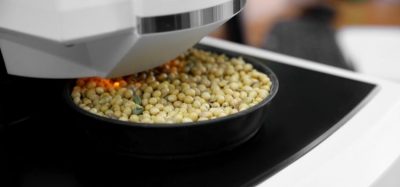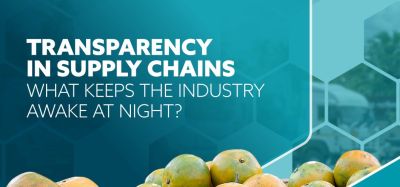Control of Salmonella in pork by decontamination
- Like
- Digg
- Del
- Tumblr
- VKontakte
- Buffer
- Love This
- Odnoklassniki
- Meneame
- Blogger
- Amazon
- Yahoo Mail
- Gmail
- AOL
- Newsvine
- HackerNews
- Evernote
- MySpace
- Mail.ru
- Viadeo
- Line
- Comments
- Yummly
- SMS
- Viber
- Telegram
- Subscribe
- Skype
- Facebook Messenger
- Kakao
- LiveJournal
- Yammer
- Edgar
- Fintel
- Mix
- Instapaper
- Copy Link
Posted: 23 May 2007 | Søren Aabo, Senior Scientist, Department of Microbiology and Risk Assessment, Institute for Food Safety, The Technical University of Denmark | No comments yet
The Danish swine industry produces more than 20 million slaughtered pigs each year. For many years most of the production has been exported, with England, USA and Japan being some of the most important markets.
The Danish swine industry produces more than 20 million slaughtered pigs each year. For many years most of the production has been exported, with England, USA and Japan being some of the most important markets.
The Danish swine industry produces more than 20 million slaughtered pigs each year. For many years most of the production has been exported, with England, USA and Japan being some of the most important markets.
Historically, meat quality parameters have focused on carcass homogeneity and absence of diseased tissue, however, in the last 30 years concern has moved towards the presence of zoonotic agents, in particular Salmonella and Campylobacter. In Denmark, Salmonella infections have been prevalent. In the eighties poultry was the source of the Salmonella infections; in the early nineties, pork emerged as a significant cause of human infections and more recently, eggs have been the culprit of human Salmonella infections.
The Danish Zoonosis Centre has estimated that between 800 and 900 registered cases could be related to pork in the nineties, while the number has been reduced to around 200 registered cases in 2005. Campylobacter has increased in importance within the last ten years and is the most frequent food borne pathogen in Denmark. It now affects twice as many people as Salmonella. Campylobacter is present in pigs but pork is not considered a significant source of human infection.
Salmonella surveillance and control programme in pork
The implementation of a national Salmonella surveillance and control programme in 1994 was due to a nationwide food borne outbreak in 1993. The outbreak was caused by Salmonella Infantis from pork and a spread of clinical Salmonellosis in swine herds due to Salmonella Typhimurium. The control programme is still in existence and is now under its fourth revision. A steering group comprising of experts have the current responsibility to adjust and run the programme. The general strategy for reducing the consumer exposure of Salmonella from fresh pork is based on long term reduction at farm and slaughterhouse level. The surveillance system plays a cardinal role in this. This system involves the surveillance of Salmonella in fresh meat at the slaughterhouses and the serological classification of the Salmonella level. The fresh meat surveillance started as bacteriological testing of between16,000 and18,000 meat samples annually and in 2001, increased to approximately 35,000 carcass swab samples. The serological surveillance includes testing of approximately 800,000 meat juice samples for Salmonella antibodies each year. This system allocates Danish swine herds into three Salmonella levels (I, II, III) with level three representing the worst case of infection. These results form the background for negotiations between industry and authorities about future limits for the Salmonella prevalence in fresh meat. In 1994, 1.3 per cent of samples from meat cuts were positive for Salmonella and the limit for 2001 was negotiated to be 0.5 per cent. The goal was increased to a limit of one per cent after the introduction of carcass swabs. With a carcass swab, prevalence of 1.3 per cent at the end of 2001, the goal was not achieved. In the following years, the Salmonella level seemed to stabilise, however, recently there has been a slow declining trend with a prevalence of a little less than one per cent. (Figure 1).
Carcass decontamination of pork
In the European Union, general decontamination of fresh meat has been allowed if potable water is used (E.C regulation 853, article 3, 2004). Chemical methods for decontamination require a specific application to the EU and approval by the EU and EFSA. Before the implementation of this regulation, the authorities were allowed to use decontamination for specific food safety management purposes. Until 2000, carcass decontamination was not applied to any meat in Denmark. However, following the first isolation of pentaresistant (R-type ACSSuT) Salmonella Typhimurium DT104 (MRDT104) in Danish slaughter pig farms in 1996, the Danish authorities implemented a zero-tolerance for this bacteria in farm animals and food. The stamping-out strategy of MRDT104 infected swine herds and specific food safety measures were implemented. A series of restrictions were put onto pig farms, in particular trade restrictions between farms, and hot water decontamination (HWD) became mandatory for slaughter pigs from MRDT104 infected herds. Carcasses are subjected to showering with 80°C hot water for 15 seconds. Using this procedure, the Danish authorities approved the carcasses for the fresh meat market, thus considering the meat as safe for human consumption. The effect of HWD has been investigated on the slaughter line and results show that E.coli has been dramatically reduced. In addition, a recent risk assessment estimated a large reduction in the Salmonella prevalence on the basis of testing a 300cm2 swabbing area. Only one Danish slaughterhouse is equipped with a HWD decontamination facility, and is obliged to handle all animals from MRDT104 infected pig herds in Denmark. HWD has recently been expanded to include animals from all herds classified as serological Level III. Thus approximately one per cent of all Danish pig carcasses are decontaminated by this method. Recently, the authorities have approved the use of a hand-held vacuum steam device for removal of visible faecal contamination. The hand-held vacuum steam device has been shown to be as efficient for removing faecal material as removal by cutting.
The future of decontamination
In 2006, the Danish government demanded that the Danish meat production should be free from Salmonella within the next 5-10 years. This demand followed a public discussion concerning the high Salmonella levels in imported products in recent years. A general frustration among politicians, authorities, and industry emerged because the increasing levels of importation leads to an unacceptable consumer risk and is feared to undermine the effect, and resources spent on the Danish Salmonella control programme. In order to protect consumers from Salmonella from both domestic and imported meat, Denmark wants to be able to set acceptable levels for the bacteria. In order to do this, Denmark is aiming at a special Salmonella guaranty in the EU, similar to that of a Sweden and Finland. For pork meat, the plan is to achieve this within the next ten years. The EC regulation 853, article 8, provides the legal basis for a Danish application. As a prerequisite, Denmark has to prove equivalence to the Swedish Salmonella status and their control programme. Generally, the Danish meat industry agrees with the authorities on this issue, however, the pork industry will be under significant pressure because it is difficult to point out manageable and efficient control points which can provide the significant improvements needed. In this respect carcass decontamination is one of the tools, which will potentially provide sufficient food safety to pork meat either as an intermediate tool or a more permanent method. Whether the EU commission will accept decontamination as a means to obtain equivalence with the Swedish system is, however, not clarified. Moreover, it is not known to which extend the Danish consumers accept the use of the decontamination of fresh meat.
New research on decontamination, the economical benefits, and consumer preferences
A three year project entitled “Efficacy, cost benefit, and consumer perception of post harvest pathogen reduction of fresh pork” has been funded by Ministry of Food, Agriculture and Fisheries under the programme “A food sector in a future perspective 2004-2008”. The programme is intended for research activities which support the advancement of a competitive, sustainable, consumer and quality-oriented food sector. The project integrates skills from nature science, economical science and social science in order to provide a comprehensive understanding and basis for public and industrial approval of general decontamination of pork in Denmark. The overall idea is to use microbiological data on the effect of decontamination methods as a basis for quantitative estimation of the achieved risk reduction in terms of fewer people being diseased from pork meat. Advanced microbiological methods will be used to study the location of tissue associated bacteria in deep surface compartments (hair follicles, crevices ect.) (Figure 2). One of the aims is to be able to show whether the decontamination methods are able to reach and kill bacteria in deep locations using confocal laser microscopy. The microbiological data will serve as input for modelling the industrial cost effect of decontamination (costs per human saved), which is supplemented by a selected cost-benefit analysis of the saved cost in the public hospital sector. Socio-economical studies aim at describing the consumer perception of food safety in general and decontamination specifically. Further the studies will include an analysis of the willingness to pay for increased food safety. This part of the project will be based on interviews and questionnaires.
In conclusion, it is still not decided if or to what extend general decontamination of pig carcasses will be implemented in Denmark. A likely scenario is a stepwise implementation on the most Salmonella contaminated slaughterhouses. It is important to notice that the domestic market will not gain full benefit of general decontamination. The reason for this is that only the export approved slaughterhouses are considered to have the economical basis for the investment. The domestic slaughterhouses slaughter approximately one per cent of the slaughter pigs in Denmark and cover between 10 and 30 per cent of the fresh meat market in Denmark.













